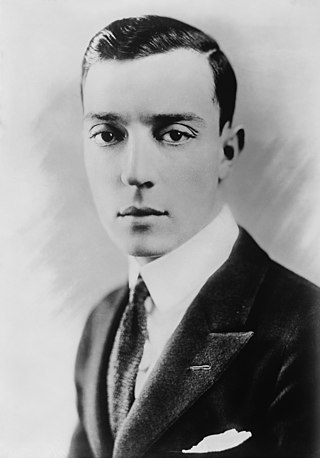
Joseph Frank "Buster" Keaton was an American actor, comedian and film director. He is best known for his silent films during the 1920s, in which he performed physical comedy and inventive stunts. He frequently maintained a stoic, deadpan facial expression that became his trademark and earned him the nickname "The Great Stone Face".

The General is a 1926 American silent slapstick Western action comedy film released by United Artists. It was inspired by the Great Locomotive Chase, a true story of an event that occurred during the American Civil War. The story was adapted from the 1889 memoir The Great Locomotive Chase by William Pittenger. The film stars Buster Keaton, who also co-directed it along with Clyde Bruckman.
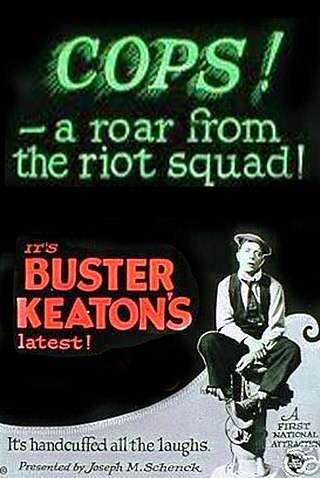
Cops is a 1922 American two-reel silent comedy film about a young man who accidentally gets on the bad side of the entire Los Angeles Police Department during a parade and is chased all over town. It was written and directed by Edward F. Cline and Keaton. This very Kafka-esque film was filmed during the rape-and-murder trial of Fatty Arbuckle, a circumstance that may have influenced the short's tone of hopeless ensnarement.

Sherlock Jr. is a 1924 American silent comedy film starring and directed by Buster Keaton and written by Clyde Bruckman, Jean Havez, and Joseph A. Mitchell. It features Kathryn McGuire, Joe Keaton, and Ward Crane.
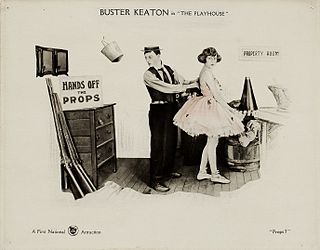
The Playhouse is a 1921 American two-reel silent comic trick film written by, directed by, and starring Buster Keaton. It runs for 22 minutes, and is most famous for an opening sequence where Keaton plays every role.

One Week is a 1920 American two-reel silent comedy film starring Buster Keaton, the first independent film production he released on his own. The film was written and directed by Keaton and Edward F. Cline, and runs for 19 minutes. Sybil Seely co-stars. The film contains a large number of innovative visual gags largely pertaining to either the house or to ladders.
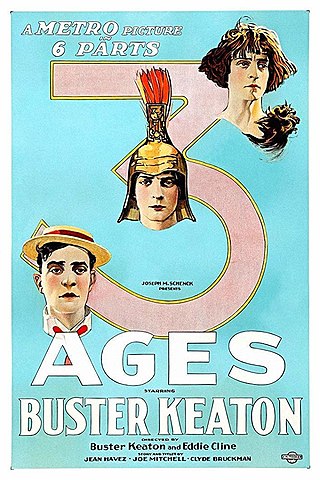
Three Ages is a 1923 black-and-white American feature-length silent comedy film starring comedian Buster Keaton and Wallace Beery. The first feature Keaton wrote, directed, produced, and starred in, Keaton structured the film like three inter-cut short films. While Keaton was a proven success in the short film medium, he had yet to prove himself as a feature-length star. It has been alleged that, had the project flopped, the film would have been broken into three short films, although this has been disputed by film historians who note that neither Keaton nor his associates made this claim in their lifetimes. The structure also worked as a parody of D. W. Griffith's 1916 film Intolerance.
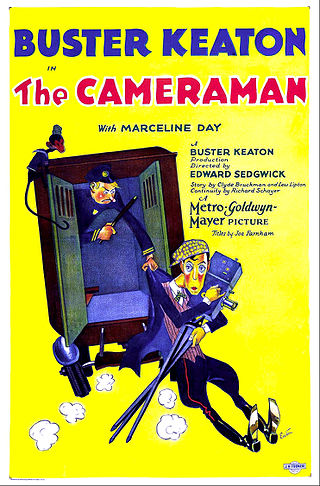
The Cameraman is a 1928 American silent romantic comedy film directed by Edward Sedgwick and an uncredited Buster Keaton. The picture stars Keaton and Marceline Day.

The High Sign is a 1921 two-reel silent comedy film starring Buster Keaton, and written and directed by Keaton and Edward F. Cline. Its runtime is 21 minutes. Although One Week (1920) was Keaton's first independent film short released, The High Sign was the first one made. Disappointed with the result, Keaton shelved it and the film was not released until the following year. The title refers to the secret hand signal used by the film's underworld gang.

Malcolm St. Clair was a Hollywood film director, writer, producer and actor.

Good Night, Nurse! is a 1918 American two-reel silent comedy film written by, and directed by, and starring Roscoe "Fatty" Arbuckle and featuring Buster Keaton. The action centers in a sanitarium where Arbuckle's character is involuntarily brought to by his wife to be operated on by Keaton's character for alcoholism.

Go West is a 1925 American silent Western comedy film directed by and starring Buster Keaton.
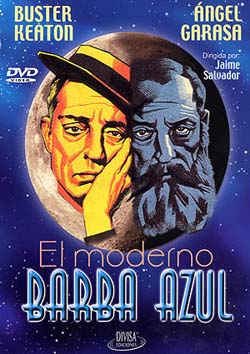
Boom in the Moon is a 1946 Mexican comedy science fiction film directed by Jaime Salvador and starring Buster Keaton. The film is notable both as Keaton's only Mexican production and as the last time Keaton had star billing in a feature film.

Coney Island is a 1917 American two-reel silent comedy film starring, written and directed by Roscoe "Fatty" Arbuckle and featuring Buster Keaton.

The Rough House is a 1917 American two-reel silent comedy film written by, directed by, and starring both Roscoe "Fatty" Arbuckle and Buster Keaton. The Rough House was Keaton's first film as a director.
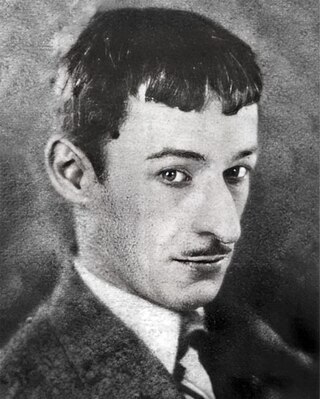
Monte Collins was an American film actor and screenwriter. He appeared in more than 160 films between 1920 and 1948. He also wrote for 32 films between 1930 and 1951.

The Frozen North is a 1922 American short comedy film directed by and starring Buster Keaton. The film is a parody of early western films, especially those of William S. Hart. The film was written by Keaton and Edward F. Cline. The film runs for around 17 minutes. Sybil Seely and Bonnie Hill co-star in the film.
Jail Bait is a 1937 American short comedy film starring Buster Keaton.
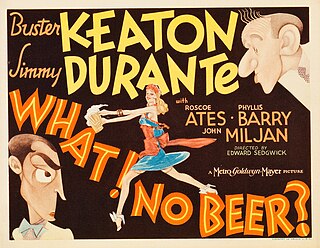
What! No Beer? is a 1933 Pre-Code comedy film released by Metro-Goldwyn-Mayer directed by Edward Sedgwick and starring Buster Keaton and Jimmy Durante. MGM had also paired Keaton and Durante as a comedy team during this period in The Passionate Plumber and Speak Easily.

Hollywood Cavalcade is a 1939 American film featuring Alice Faye as a young performer making her way in the early days of Hollywood, from slapstick silent pictures through the transition from silent to sound.



















